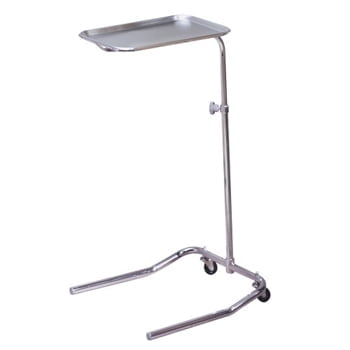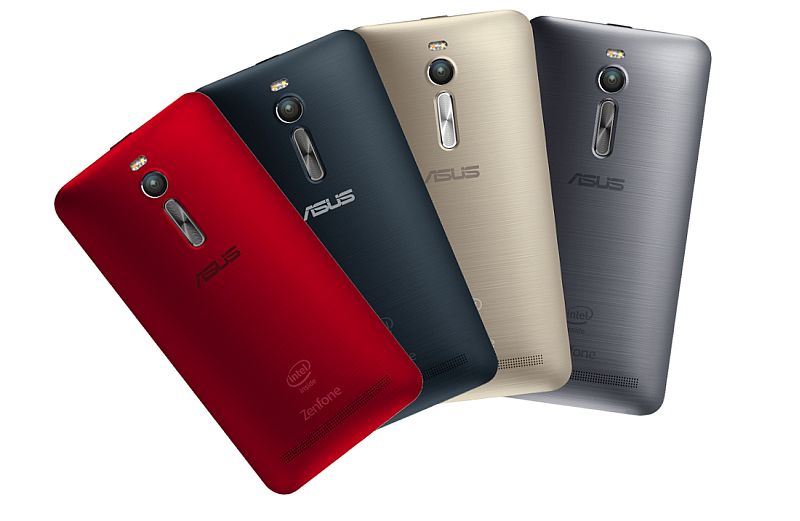Just like the rest of the business landscape, ecommerce is changing and evolving. The COVID-19 pandemic put that change into overdrive and altered each part of the buyer journey. In just a few clicks, customers can place an order and have it delivered within 24 hours. As a result, the ecommerce environment is highly competitive and more consumer-focused than ever. Organizations need to stay agile to meet new customer needs, but how?
Enter headless commerce, the newest frontier in ecommerce.
What is Headless Commerce?
Headless commerce is an ecommerce solution that stores, manages, and delivers content without a front-end delivery layer (your site and user interface). The frontend is decoupled and removed, leaving only the backend management layer. With this freedom, developers can integrate into any platform through the API, providing creative and technological flexibility to experiment with new possibilities and enhance customer experience.
What is Headless Commerce Architecture?
The user interface is the frontend or “head” of a conventional ecommerce platform. For customers, that’s what’s on the screen for a website or application. Traditionally, the frontend is connected to the backend, which includes the information on the server and the data structure. Because of this, a traditional ecommerce platform can only work if it’s on a device that supports its front-end framework, leading to a disconnected user experience.
Headless commerce architecture is decoupled architecture that’s designed to push content to any platform through APIs. With this approach, the architecture focuses on background processes to keep the data accessible to separate front-end applications with commerce APIs. The backend, which includes infrastructure and security, runs in the background. These two parts communicate via API calls and allow developers to use any device or application for their product or service. This is vital, since customers place orders in new ways, such as televisions and digital home assistants.
How Headless Commerce Works
Headless commerce removes the front-end framework and allows requests to pass between the interface and application layers through API calls. For example, a user can click a “Buy Now” button on a smartphone and the interface layer of the system sends an API call to the application layer for processing. When that’s completed, the application layer sends another API call to the interface layer to show the order status.
Ecommerce businesses have virtually limitless customization options and use of non-traditional platforms. It’s not only easier to customize the frontend of a platform, but you can use a single backend across multiple platforms. In addition, more and more platforms and devices are requiring headless commerce to work properly, such as Amazon Alexa and Google Home.
Headless Commerce vs. Traditional Commerce
There are three main differences between headless commerce and traditional commerce:
Flexible Front-End Development
With traditional commerce, front-end developers have to navigate constraints and obstacles with the development and design process. Each change requires editing the code, database, and front-end platform. In some cases, a developer’s changes can accidentally void a warranty or limit future updates and upgrades.
With headless commerce, front-end developers can focus on user experience that suits the platform and business goals. There’s no concern for back-end modifications, since all it takes is an API call. Development is not only flexible and more fluid, but faster.
Customization
Traditional commerce includes predefined front ends that have an experience built in for the customer and administrative user, which takes time and effort to develop. If you want to personalize the experience, it requires a front-end overhaul. Adapting to changes in user experience becomes even more challenging.
With headless commerce, developers can create customized user experience from the ground up with control over the way the platform looks and feels. This applies to both the customer and the administrative users.
Adaptability
Traditional commerce has a frontend and backend that are coupled with tight coding and infrastructure. To adjust or customize any aspect, the developer needs to edit multiple layers of coding between both the front- and backend. Headless commerce is already decoupled, allowing for easier customization or changes on just the part of the front-end developer. In a market that demands agility, these rapid-fire changes offer a competitive advantage.
Some other benefits of headless commerce include:
- Simple integration: Traditional commerce platforms have independent management and a disconnected user experience. Headless commerce integrates with a centralized backend for a seamless experience.
- Easier A/B testing: With the flexibility of the frontend, headless commerce allows for faster, simpler A/B testing for optimal user experience. Developers can create two user experiences and test which one increases conversions. With traditional commerce, A/B testing is more arduous.
- Scalability: Headless commerce’s centralized back-end framework allows organizations to scale quickly and easily in comparison to traditional commerce.
Finally – and most importantly – there’s a possibility that headless commerce architecture may become a requirement for ecommerce to adapt to customer needs. As more apps, devices, and platforms emerge, traditional commerce will struggle to keep up with creating, maintaining, and upgrading interfaces.
Benefits of Headless Commerce
Innovative ecommerce businesses have endless possibilities with headless commerce. One of the best examples of successful headless commerce is Amazon, which satisfies customers with seamless services like Amazon Prime.
Switching to headless commerce has numerous benefits, including:
Competitive Edge
Headless commerce allows for rapid updates without impacting the backend. As consumer technology changes and adapts, you can adjust your frontend to keep up with the demand.
With a traditional update, the frontend and backend are connected and an update affects the whole system. Traditional commerce platforms typically roll out updates in a few weeks. Headless commerce platforms, such as Amazon, roll out updates in a matter of seconds. This keeps the platform running efficiently with minimal downtime.
Consistent and Personalized Customer Experience
Consumer needs are always changing – and so is user experience – but customers expect a consistent, personalized experience across platforms and devices. Consumers are prioritizing brands that consider their needs and experiences on all channels.
With headless commerce, the backend already has the data stored and can inform personalization for a seamless user experience, no matter where the customer interacts with the brand.
Faster Time to Market
Time to market can be slow with traditional commerce, especially with omnichannel experiences. Scaling is worse, and may require significant changes to the existing architecture.
Headless commerce helps brands get to market faster with an adaptable frontend and centralized backend that can be delivered via API. When a brand adopts new channels or new approaches, tailoring the frontend is faster and simpler.
Brand Recognition
With many traditional ecommerce platforms, brands have to rely on existing templates. Other than some colors and graphics, most stores look the same. If you try to design your own template, you have to work within the confines of the vendor’s existing designs.
Headless commerce offers total control over the frontend for customized interfaces and designs that speak not only to your customers, but showcase your brand. You can use your own design principles to create an appealing storefront that stands out from the pack, nurturing brand recognition and increasing conversion rates.
New Content Opportunities
Headless commerce enables you to use any content management system that you wish, rather than relying on a built-in system. Your team has the freedom to create, update, and maintain content without hampering the backend or the overall user experience. With traditional commerce, content teams typically need a backend developer to deliver new content, impacting workflow, costs, and productivity.
Capitalizing on Trends
Trends come and go, but keeping up with them is a vital part of staying relevant and profitable in ecommerce. Traditional architecture is difficult to change and doesn’t allow for experimentation or real-time updates. By the time you have the updates worked out, the trend may have passed.
Headless architecture eliminates this problem by allowing your front-end development team to adapt to trends and tailor the customer experiences without impacting the backend. You can test new features, make adjustments, and stay ahead of the trends. The result is enhanced performance, improved conversion rates, and better bottom-line performance.
Customized Tech Stack
Traditional commerce forces you to work within existing tools, whether they suit your business or not. Headless commerce takes an a la carte approach with API-driven solutions for a customized tech stack that’s ideally suited for your individual business needs.
For example, the creative team may prefer a specific content management system that allows for content creation, back-office tasks, inventory management, pricing, and shipping. If you’re forced to use whatever system is included, your team may suffer a loss in productivity.
Future-Proofing
Disruptive technologies emerge all the time, adding new features to mobile devices, browsers, and applications. Headless commerce enables you to adapt with technological changes and take advantage of the benefits of the new features. It also offers developers better tools to optimize productivity.
Instead of having to search for new talent or train your team in new skills, you can access a much larger pool of talent that uses the newest technologies in the industry.
Optimized Speed and SEO
Site speed is a huge part of user experience, especially with an ecommerce site. According to a 2017 study by Akamai, a 2-second delay in load times increases bounce rates by 103 percent, 100 milliseconds of latency impacts conversion rates by 7 percent, and about 53 percent of users will click away from a page that takes longer than 3 seconds to load.
With so much at stake, speed is paramount to your brand’s success. Traditional commerce takes speed out of your hands, but with headless commerce, your development team can have control over site performance. You can implement faster solutions that will keep your customers from clicking away.
Site performance is also an important factor in Google search rankings. If you improve your site speed, your site’s SEO will perform better. Other SEO factors, like optimized content and mobile optimization, also benefit from the flexibility of headless commerce.
Headless Commerce Use Cases
Headless Commerce can Adapt to Different Locations
Different geo locations have different needs. The messaging behind your brand needs to match its target audience, which can be challenging if you’re dealing with vastly different locations or cultures.
Headless commerce gives you the freedom to create region-specific subsets of content. You can align the messaging with the intended audience easily for successful conversion and better bottom-line performance.
Headless Commerce Adjusts to Language Challenges
Google Translate and other translation applications are convenient, but may not be optimal for translating your brand’s content with the messaging intact. This is especially true of English, which has a lot of nuances and phrases that don’t translate well. Headless commerce allows creators to translate languages before the content is live to overcome these challenges. Content can also be encoded with the appropriate characters.
Headless Commerce Formats for Different Delivery
In the modern market, conversion opportunities are divided across multiple devices and applications. Conversion isn’t always a sale, however, and may mean a subscription or a social media follow. With headless commerce, the touchpoints can be adapted to the customer journey and provide the right messaging at the right time.
Headless Commerce Integrates with Other Systems
Depending on the business needs, brands can combine headless commerce with a traditional system or a coupled system on a specific channel. In some cases, it may be ideal to use a traditional system for a touchpoint and conversion. Headless commerce integrates with these systems for a seamless and customized approach.
How to Choose a Modern Ecommerce Solution
Ecommerce solutions are plentiful, but not all offer the same features and capabilities. Some brands rely on legacy architecture that they invested in, even though headless architecture offers more benefits. This limits the options for ecommerce platforms.
Fortunately, headless commerce architecture integrates into an existing frontend. Brands can keep the same aesthetics and user experience on the frontend, yet benefit from the flexibility of headless architecture on the backend.
Without a headless system, retailers are vulnerable to the rapid market changes and onslaught of new devices and tools. Developing a new user interface and backend for each of these is not only expensive, but nearly impossible with time constraints.
That said, headless commerce is not without its drawbacks. As a newer option, it suffers from some of the same challenges as any emerging technology. Troubleshooting and security are more challenging than with traditional architecture. The network support for traditional platforms is massive and has been in place for a long time, and the platforms themselves handle new feature updates and rollouts. With headless architecture, you must rely on your own team to handle design costs, security, and updates.
Top Headless Commerce Platforms
Shopify Plus
Shopify Plus is a large platform that offers headless commerce options. Unfortunately, many brands aren’t using the platform to its fullest. This is partly due to Shopify not advertising the available features, however. If you’re already using Shopify or Shopify Plus, transitioning to headless architecture should be smooth and easy. Shopify Plus also offers integrations to improve the user experience. That said, the platform is new to the architecture and may suffer from some technical hiccups.
Brands that switch to Shopify Plus will need to create their own frontend and take on the responsibility of data security for their customers during checkout. Many of the attractive themes and plugins for Shopify won’t work with headless architecture. Shopify Plus can also be a larger investment starting at $2,000 per month, and may be cost-prohibitive for small businesses.
BigCommerce
BigCommerce is designed for more experienced brands, but it has a few advantages over other platforms. This platform was designed to handle high volumes of API calls, whereas Shopify Plus was not. BigCommerce also approached the design with the future of headless architecture in mind, rather than as a new feature to meet customer demand.
BigCommerce prioritizes front-end customization early on, helping it stand out from the competition. Because it’s been offering headless architecture for a while, it’s less expensive that some new solutions.
Another differentiating factor for BigCommerce is its capabilities in the B2B space. BigCommerce is focused on B2B and it shows, but because it’s not intended only for consumers, it’s not as intuitive. For brands with a desire to move to headless architecture and a development team or familiarity with coding, BigCommerce is a great choice. If ease-of-use and scalability are more important, Shopify Plus is the better choice.
Magento 2 Commerce
Magento 2 Commerce struggled with interface issues in its early stages, but its performance has improved significantly. Regarded as an industry leader, Magento 2 Commerce has more flexibility than a lot of its competitors and focuses on B2B brands. It also uses an open-source platform and offers a massive community of users.
However, Magento 2 Commerce is unintuitive and requires coding knowledge. Compared to Shopify Plus, Magento 2 Commerce is clunky and difficult for B2C brands to learn and use.
Take Control of the Ecommerce Experience
Delivering a seamless and memorable customer experience is a sharp competitive edge in modern business. When you make the switch to headless commerce architecture, you’ll have the flexibility to tailor your platform to your audience for stellar user experience without the restrictions of traditional commerce models.
[“source=vincit”]













